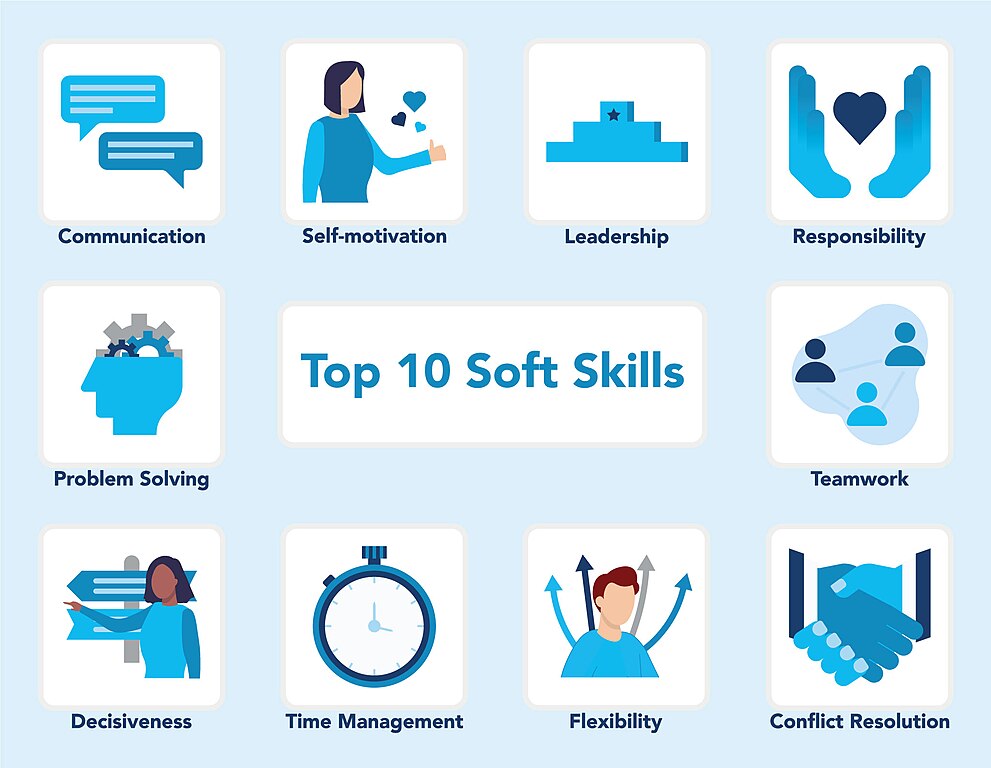
In management, inspiring and guiding teams is more important than ever. Did you know 77% of organizations say they have a leadership gap? This shows how crucial it is for managers to sharpen their leadership coaching skills. Whether you've been leading for years or are new to the role, getting good at these techniques can really boost both your career and your team's success. Think about creating a space where everyone feels empowered and driven to do their best. In this guide, we'll go over the key steps to becoming a great coach, ready to face the challenges of today's fast-paced workplace. Ready to explore and see what you and your team can achieve?
Step-by-Step Guide to Master Leadership Coaching Techniques
Conduct an Initial Leadership Assessment
Evaluate Leader's Strengths and Weaknesses Using Tools
First things first, if you're looking to master leadership coaching, you need to get a handle on where the leader stands right now. You can do this by using tools like SWOT analysis, 360-degree feedback, and personality assessments. These tools help you spot what's working and what needs some love.
For example, 360-degree feedback gives you a full picture by gathering opinions from folks all around the leader—peers, subordinates, and supervisors. This helps you see any gaps between how the leader sees themselves and how others see them. Self-assessment questionnaires and personality tests also help leaders dig into their own skills and behaviors.

Identify Leader's Current Position and Improvement Areas
Once you have all this info, it's time to figure out where the leader is on their journey. Look at the results to see what they're good at and where they need a boost. Maybe they're great at strategic thinking but not so hot at communicating. Knowing these details helps you set a starting point and figure out what skills need work to make them a better leader. This clarity is key for setting coaching goals that match their personal and career aims.
Develop Personalized Leadership Coaching Goals
Collaborate to Set Relevant Coaching Goals
Creating personalized coaching goals is a team effort. You and the leader need to work together to set goals that make sense based on what you've learned. This ensures the goals are relevant and that the leader is invested in the process.
Start by going over the assessment results, pointing out both strengths and areas to improve. Encourage them to share their thoughts and dreams. Together, pick out key areas that, if improved, would really boost their leadership.
Implement SMART Goal-Setting Framework
To make sure these goals are clear and doable, use frameworks like the SMART criteria. SMART stands for Specific, Measurable, Achievable, Relevant, and Time-bound. This helps keep things organized and progress easy to track.
For instance, instead of saying “improve communication skills,” a SMART goal would be “increase team engagement scores by 20% in six months by having weekly check-ins and feedback sessions.” This makes the goal specific, measurable, and gives everyone a clear direction.
Apply the GROW Model in Leadership Coaching
Define Leadership Goals
The GROW model is a handy framework to guide leaders through solving problems. Start by defining the Goal. What does the leader want to achieve, both now and in the future? The goal should be inspiring but also realistic. Encourage them to picture what success looks like and what it would mean for them and their team. This vision keeps them focused.
Evaluate Current Leadership Challenges
Next, take a good look at the Reality. What’s the current situation and what hurdles are in the way? This means honestly evaluating the leader’s current skills and resources. Encourage them to think about recent successes and setbacks. Ask questions about the factors at play, like team dynamics or external pressures. This gives a clear picture of where they are and what needs fixing.
Explore Leadership Strategies and Solutions
Once you understand the current reality, move on to exploring Options. Brainstorm different ways to tackle the challenges. Encourage creative thinking and consider all possibilities, even the unusual ones. Talk about the pros and cons of each option, thinking about feasibility, impact, and how they align with values and goals. This step is crucial for finding the best path forward.
Commit to Leadership Action Steps
Finally, establish the Will by committing to specific actions. Turn chosen strategies into concrete steps with timelines and milestones. Encourage the leader to own their plan and think ahead about potential challenges. Discuss how to tackle these and what support they’ll need. This commitment is key for turning ideas into real results.
Practice Active Listening in Leadership Coaching
Focus on Leader's Communication and Emotions
Active listening is a must in leadership coaching. It helps build a deeper connection and understanding. Focus on the leader's words, emotions, and body language. Show genuine interest. Pay attention not just to what’s said, but how it’s said. Notice changes in tone and pace, as these can reveal emotions. Use verbal and non-verbal cues to show you’re present, like nodding or saying “I see.”
Use Body Language to Enhance Communication
Keep eye contact and use open body language. These signals show respect and attentiveness. Avoid crossing your arms or looking away, as these can block communication. Reflecting the leader’s statements is powerful, too. Paraphrase what they say to ensure understanding and validate their feelings. For example, if they’re frustrated, you might say, “Sounds like you’re overwhelmed by the team’s workload.” This not only confirms your understanding but also encourages deeper reflection.
Use Powerful Questioning Techniques
Challenge Leadership Assumptions with Thought-Provoking Questions
Powerful questioning can really boost the coaching process. It challenges assumptions and prompts deeper thinking. These questions make leaders reflect on their beliefs and explore new perspectives. Aim for curiosity and self-reflection. Ask, “What assumptions are you making?” or “How might you handle this differently without constraints?” These questions help leaders break free from routine thinking.
Prepare Leadership-Focused Questions
Having a set of powerful questions can spark meaningful conversations. Questions like “What does success look like for you?” or “What’s holding you back?” help leaders articulate their vision and identify obstacles. These questions are designed to clarify goals and recognize barriers. By asking the right questions, you guide leaders toward greater self-awareness and empower them to take steps toward their goals.
Implement Socratic Questioning in Coaching
Encourage Self-Reflection Through Socratic Questions
Socratic questioning involves asking probing questions to encourage self-reflection and explore alternatives. This helps leaders examine their beliefs and assumptions for a deeper understanding. Start with open-ended questions that prompt critical thinking. For example, “What evidence supports your approach?” or “What other perspectives could you consider?” These questions help leaders analyze their thoughts and explore different views.

Promote Learning from Leadership Experiences
Socratic questioning also helps learn from past experiences. By asking, “What could you do differently next time?” you encourage reflection on actions and identify improvement opportunities. This promotes a growth mindset, where challenges are seen as learning experiences. It empowers leaders to own their development and fosters continuous learning.
Apply the CLEAR Model for Effective Coaching
Define Coaching Session Goals and Purpose
The CLEAR model offers a structured approach to coaching talks. Start by setting the Contract, which means defining the session’s purpose and goals. This gives clarity and direction. Discuss what the leader wants to achieve and how it aligns with broader goals. This sets the tone and ensures the leader’s needs are prioritized.
Explore Leader's Current Situation
Next, explore the leader’s current situation in the Listen phase. Actively listen to their experiences and concerns. Encourage open sharing in a supportive environment. Use active listening to show empathy and understanding. Ask clarifying questions for deeper insight. This phase builds rapport and trust, crucial for effective coaching.
Identify Core Leadership Issues
After understanding the situation, identify underlying issues in the Explore phase. Dig deeper into challenges to uncover root causes and patterns. Ask questions that prompt reflection on barriers and explore different angles. For example, “What factors might influence this issue?” or “How were similar situations handled before?” This helps identify development areas and informs next steps.
Develop Actionable Leadership Plans
Once issues are identified, agree on specific actions in the Agree phase. Collaborate to develop a clear action plan outlining steps to tackle challenges and reach goals. Ensure the plan is realistic and that the leader feels confident and committed. Discuss potential obstacles and strategies to overcome them. Identify resources and support needed for success.
Review Leadership Progress and Adjust Plans
Finally, reflect on progress in the Review phase. Regularly review progress and adjust the coaching plan as needed. Schedule check-ins to discuss successes and needed adjustments. Encourage reflection on experiences and share insights or challenges. Use feedback to make informed coaching plan adjustments, ensuring it stays relevant.
Monitor Leadership Progress and Adapt Strategies
Regularly Review Progress in Leadership Coaching
Keeping tabs on progress is key in leadership coaching. Regular reviews help assess strategy effectiveness and make necessary tweaks. Schedule feedback sessions to talk about achievements and obstacles. These sessions help celebrate wins, tackle challenges, and refine the coaching plan. This ongoing feedback keeps things moving and ensures the process adapts to the leader’s changing needs.
Utilize Tools for Leadership Progress Tracking
To effectively monitor progress, use feedback sessions, tracking tools, or coaching logs. Feedback sessions offer open dialogue and problem-solving. Progress tracking tools, like dashboards or apps, give a visual of achievements and areas needing work. These tools provide valuable data to inform decisions and keep the leader focused. Coaching logs capture the coaching journey, recording insights, actions, and reflections. Encourage leaders to keep a log to track progress and document learning. This promotes self-reflection and accountability, empowering leaders to own their development.
Understanding the Importance of Coaching Leadership
Coaching leadership is crucial for organizational success. It fosters a culture of continuous learning and development. By giving leaders the skills and tools they need, coaching boosts their ability to inspire teams, drive performance, and handle challenges. Effective coaching helps leaders develop key skills like communication, emotional intelligence, and strategic thinking. These are vital for building strong relationships, fostering collaboration, and driving innovation. Also, coaching supports leaders in navigating change and uncertainty, helping them lead with confidence and resilience.
Core Coaching Models and Skills for Managers
Managers are vital in coaching as they implement strategies and support team development. To be effective, managers need core coaching skills and models. Key skills include active listening, powerful questioning, and giving constructive feedback. These help create an empowering environment where team members feel valued and motivated. Managers should also know coaching models like GROW and CLEAR, which provide structured conversation approaches. These models help facilitate discussions, set clear goals, and develop actionable plans for performance and development.
Step-by-Step: Implementing Coaching Techniques in the Modern Workplace
Implementing coaching techniques today needs a strategic approach that aligns with organizational goals. Start by assessing the current coaching culture and finding improvement areas. Gather employee feedback, evaluate practices, and identify gaps. Develop a comprehensive plan outlining goals, strategies, and resources for effective coaching. Include training programs and tools to support the process. Once set, focus on creating a supportive culture encouraging open communication and collaboration. Encourage leaders to model coaching behaviors and provide opportunities for coaching conversations. Regularly review and adjust the plan to keep it relevant.
Measuring the Impact of Coaching Techniques
Measuring coaching technique impact is crucial for showing value and ensuring effectiveness. Set clear metrics and benchmarks aligned with organizational goals. These might include performance indicators like engagement, productivity, and retention. Use both qualitative and quantitative data to assess impact. Qualitative data, like feedback, offers insights into experiences and performance impact. Quantitative data provides measurable evidence of effectiveness. Regularly review data to spot trends and improvement areas. Use this info to adjust strategies and ensure continued value delivery.
Customizing Coaching for Different Career Stages
Coaching should fit the unique needs and challenges of different career stages. Early-career folks may need coaching on skill development and confidence-building. Mid-career professionals might focus on leadership development and strategic thinking. This stage often involves navigating complex dynamics, making coaching key for success. For senior leaders, coaching might refine leadership style and drive change. It helps enhance influence, inspire teams, and achieve long-term visions.
Getting Started with Leadership Coaching
Starting with leadership coaching means committing to growth. Identify your needs and goals, and find a qualified coach for guidance. Engage in self-reflection to understand strengths, weaknesses, and aspirations. This self-awareness is key for setting meaningful goals. Finally, embrace a growth mindset and be open to feedback and new experiences. Leadership coaching is a journey of continuous learning, and being willing to learn and adapt is crucial for success.